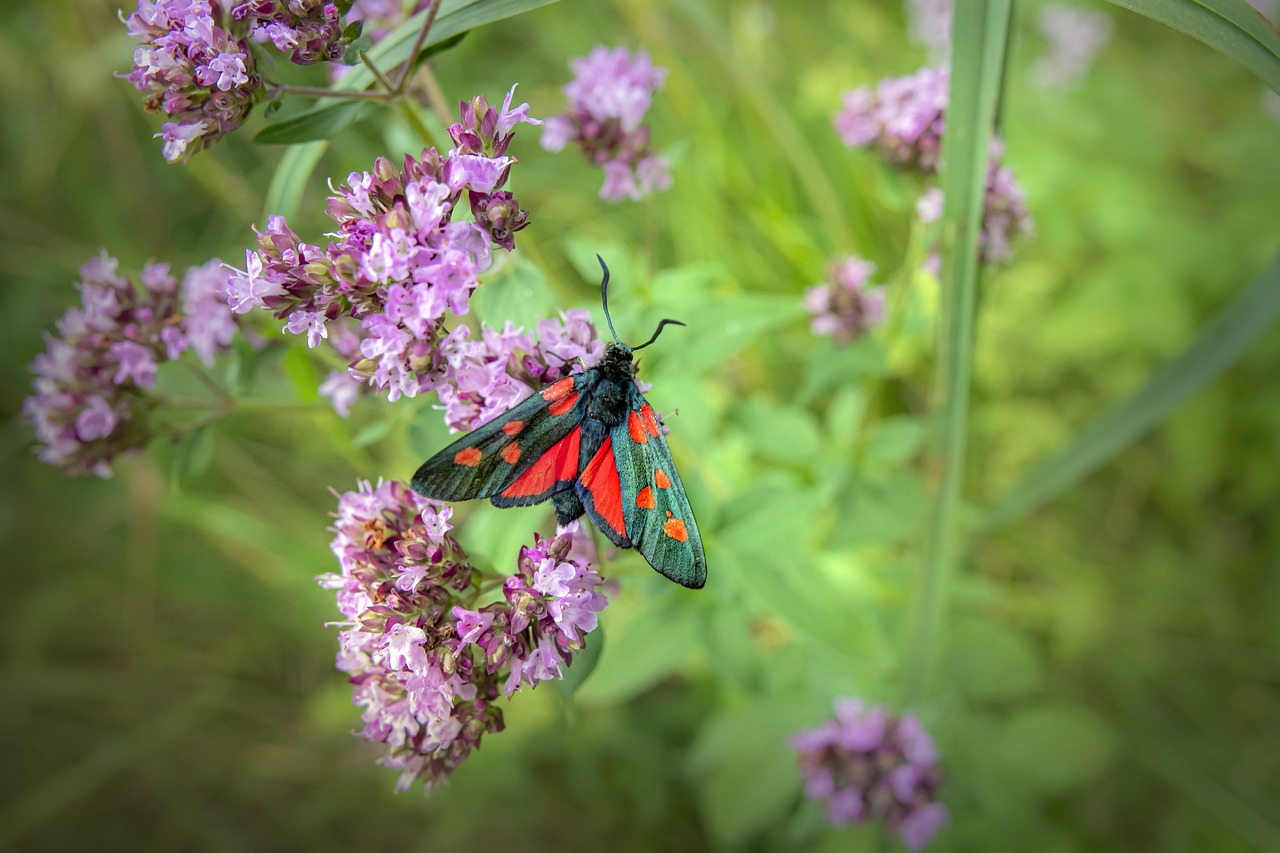That’s a great choice! The Narrow-bordered Five-spot Burnet (Zygaena lonicerae) is a distinctive and common day-flying moth belonging to the family Zygaenidae (the burnet moths). Like its relatives, it is known for its bright aposematic (warning) coloration.
Here is a deep review of its key characteristics, biology, and defense mechanisms.
🖤 Narrow-bordered Five-spot Burnet (Zygaena lonicerae) Deep Review
1. Identification and Morphology
| Feature | Detail |
| Family | Zygaenidae (Burnet Moths) |
| Size | Medium-sized moth, with a wingspan typically ranging from 30 to 40 mm. |
| Forewings | Glossy, dark metallic green or bluish-black ground color. Each forewing displays five vivid crimson or red spots. |
| Spot Arrangement | The five spots are typically arranged with three smaller spots closer to the body and two larger, slightly elongated spots near the wing tip. A key feature is the narrow black border separating the red spots from the wing margin. |
| Hindwings | Entirely bright red or crimson, framed by a narrow, well-defined black border. |
| Antennae | Possesses distinctive, strongly clubbed antennae, often referred to as ‘hooked.’ |
| Similar Species | It is often confused with the Six-spot Burnet (Z. filipendulae). The difference is in the number of spots (five vs. six) and the spot shape (the five spots of Z. lonicerae are generally more circular and distinct, whereas the spots in Z. filipendulae often appear to merge). |
2. Distribution and Habitat
- Geographic Range: Widespread across the Palaearctic region, spanning most of Europe (including the UK) eastward through Russia and Siberia.
- Habitat Preference: It is strongly associated with flowery grasslands and meadows that are relatively dry and well-drained, unlike some of its moisture-loving relatives.
- Primary Habitats: Calcareous grasslands, dry roadside verges, heathlands, and coastal cliffs where its host plants thrive.
- Altitude: Found from sea level up to mid-elevations in mountainous regions.
3. Life Cycle and Defense
Activity and Flight
- Flight Season: Univoltine (one generation per year), flying primarily in the mid-summer months, typically from late June to August.
- Diurnal Activity: Like all burnet moths, it is day-flying and often seen sluggishly basking or feeding on nectar.
- Nectar Sources: Adults strongly favor nectar-rich flowers, particularly thistles, knapweeds (Centaurea), Scabious, and Ragwort.
Larva and Host Plants
- Egg Laying: Females lay small batches of pale yellow eggs on the underside of the host plant leaves.
- Larva (Caterpillar): The caterpillar is pale yellow or greenish-yellow with rows of black and yellow spots.
- Host Plants: The caterpillars feed on legumes, with the primary host being Broad-leaved Meadow Vetchling (Lathyrus pratensis). They also use other legumes like various species of Clover (Trifolium) and Vetch (Vicia).
- Overwintering: The species usually overwinters as a larva (caterpillar) in its early stages.
Aposematism and Cyanide Defence
- Warning Coloration (Aposematism): The vivid red and black coloration is a classic example of aposematism (warning signals). This advertising is essential because the moth is highly poisonous to most vertebrates.
- Cyanide Production: Both the larval and adult stages can biosynthesize or sequester hydrogen cyanide (HCN) and related cyanogenic compounds. This toxin is stored in specialized cavities and released when the moth is crushed or attacked, acting as a powerful deterrent to birds, lizards, and other predators. The red-and-black pattern serves as a constant reminder of this toxicity.
Visited 842 times, 17 visit(s) today
Views: 1107
Subscribe to the newsletter:
